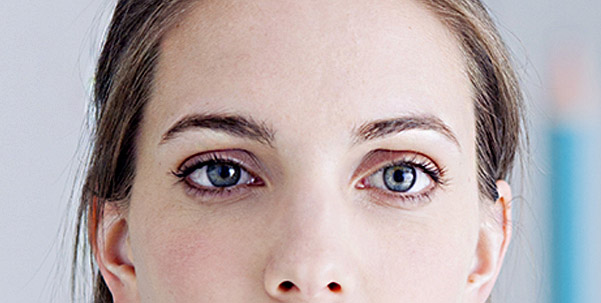
Strabismus: What is it and how is it treated?
Are you seeing double? Dr Peter Martin in Sydney discusses strabismus; what it is, and how it can be corrected.
The human eyes are designed to work together as a pair, focusing on an object and sending images back to the brain which are then fused into a single 3-dimensional image, providing us with depth perception.
For patients who suffer from strabismus, the eye may deviate in any direction, altering the person’s depth perception and resulting in double vision. In adults, this condition is easily recognised by the individual as they realise seeing double isn’t normal. However, in children, strabismus is marginally harder to diagnose due to the child adapting and learning to ignore or supress the second image.
Did you know: if strabismus remains untreated, decreased vision in one eye (amblyopia) may occur? These effects are permanent.
There are four types of Strabismus
- Esotropia: Deviation inward
- Exotropia: Deviation outward
- Hypertropia: Deviation upward
- Hypotropia: Deviation downward
What are the causes of strabismus?
An orthoptist will be able to determine the cause of strabismus, as well as recommend treatment. The most common causes are:
- Refractive errors: such as short-sightedness, long-sightedness, or astigmatism (a deviation in the spherical curve of the lens)
- Paralysis or imbalance of the eye muscle
- Hereditary
Is Strabismus the same as ‘lazy eye’?
In short, no, strabismus and lazy eye are not the same condition. ‘Lazy eye’ (or amblyopia) is where the brain does not fully acknowledge the images sent by the affected eye. This condition is not treatable by glasses or contact lenses. In patients suffering from strabismus, if the eye is constantly turned in one direction, it may lead to amblyopia.
Checking your child for strabismus
Trying to determine a child’s ailment can sometimes be a challenge, especially if a child is born with a condition such as strabismus. Your child may not realise what they are experiencing is abnormal and they will try to adapt to the condition.
If you think there may be cause for concern, Dr Peter Martin (located in Sydney) is able to help determine if there is a reason to be worried, or put your mind at ease by confirming if there isn’t. If you observe your child, there are also a number of small factors that could help you determine if there is a need to be worried.
Things to watch out for:
Do your child’s eyes appear to be looking in different directions? You may notice your child squinting, particularly in bright sun light, or bumping into items that most people would avoid (like kitchen benches). Your child may also reach for objects and miss, or express disinterest in toys and books with finer details. This may be because they are unable to focus on the item properly and have reduced depth perception.
Regardless of if you have a family history concerning eye dilemmas, all young children should have their eyesight assessed. If any of the above symptoms are present, there may be cause for concern.
Can strabismus be treated?
Fortunately, strabismus can be treated. These treatments aim to preserve the vision, straighten the eyes and restore binocular vision to the patient. Your practitioner may recommend any of the following:
- Glasses: If strabismus has been diagnosed as the result of a refractive error, the use of glasses may encourage vision to improve as well as a slight (if not complete) improvement to the eye position.
- Occlusion/Patching: If a child is suffering strabismus combined with amblyopia, a patching treatment may be initiated. During this treatment the good eye will be covered with a patch, forcing the use of the weaker eye. This treatment should be carefully monitored.
- Surgery: Depending on the severity of the strabismus, surgery may be a treatment option. Surgery is performed on the muscles of the eye to help straighten the affected eye. In children the operation is performed to achieve cosmesis (the restoration of bodily beauty) and a functional result. Adults generally undergo surgery to achieve cosmesis.
Dr Peter A. Martin is able to discuss with you treatment options as well as advise which treatment will be the most beneficial for you.



